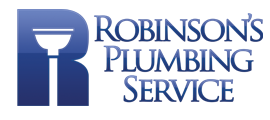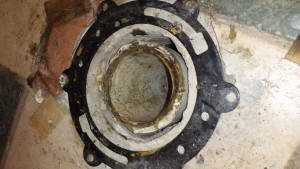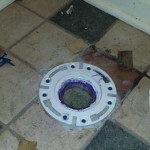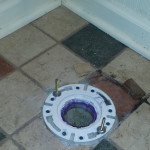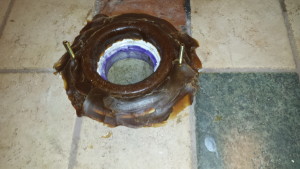Sometimes a clogged toilet is a simple fix, but in many instances, it’s just the symptom of a larger problem. That was the case for one of our Charlottesville clients, who called us about a toilet that was clogged and wouldn’t flush properly.
When we arrived at the home, we turned off the toilet’s water supply and removed the toilet so we could access the drain line underneath. We immediately saw a problem: The flange that had been installed to connect the toilet to the drain did not fit tightly around the drain line. We knew we would need to fix that when we reinstalled the toilet, but it wasn’t the cause of the clog, so we kept looking.
If we can’t see anything obvious when we’re looking into a drain or if initial attempts to clear it don’t work, we will often run a camera into the line to inspect it and find the source of the problem. When the technician in the Charlottesville case used the camera, he could see an obstruction that was keeping the line from draining properly. The blockage was at a distance that it could be reached with our drain-cleaning machine, so our technician used the machine to remove tree roots and other debris from the line.
Tree roots are commonly to blame for clogged drain lines. Often, a homeowner doesn’t realize how expansive a tree’s underground root system is until buried pipes are invaded by roots from a tree several feet — or even yards — away.
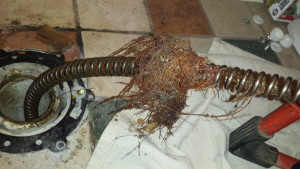
If left alone, the roots will grow to fill the line with hairlike root masses and will catch other materials that are put down a drain, at first just slowing the drain but eventually causing a total blockage.
Tree roots can sometimes be trimmed from inside a drain line, or chemical agents can be used to destroy roots and slow growth, but as the roots grow, they’ll put more and more stress on the line. Once a drain line is compromised by roots, that section will eventually need to be replaced to truly fix the problem.
That’s what we did in Charlottesville. The blockage had been removed, but the problem was still there. We excavated the yard in the area of the blockage and removed the damaged section of the drain line. When we replaced it, we ensured the joints around the new section were well-secured to prevent the escape of those root-attracting vapors.
After the line was repaired, we moved back inside. We installed a new flange around the drain line and added a wax ring to ensure a tight seal before replacing the toilet. An ill-fitting or improperly installed flange can lead to leaking around the base of the toilet. Such a leak can cause damage to your bathroom flooring or even more serious structural damage to the subfloor.
When all was said and done, we had fixed the clog to get the toilet working again and replaced the flange to prevent the homeowner from having to make more extensive and costly repairs in the future.
Finished Product

Robinson’s Plumbing Service
Whether the source of your plumbing problem is a clogged drain line or something else, contact the team at Robinson’s Plumbing Service for a fast diagnosis and effective solution.
